Chicken Molting
This article will walk you through chicken molting and how you can tell if that is what is going on with your hen.
Molting is a natural part of raising chickens, and once you understand what it is, you will be better prepared to help your chicken cope.
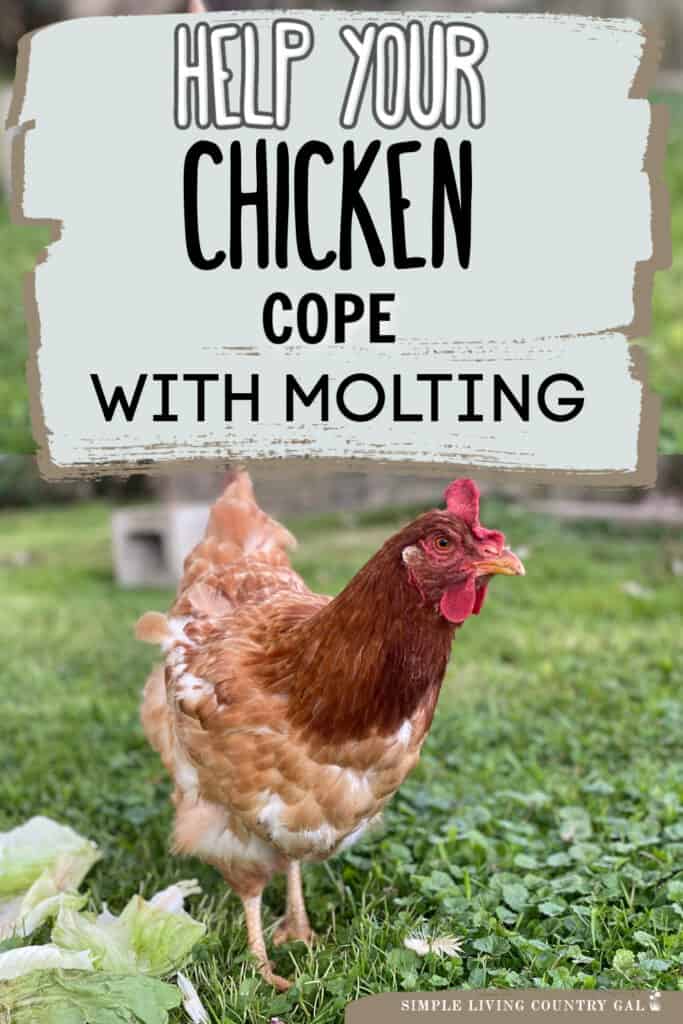
Chicken molting is something that is perfectly normal and nothing you should be too concerned about when it happens. Even though it looks awful, as if your chicken has a horrible disease, it is actually a normal part of its life.
There are, however, a few things you can do to give extra care during the molting season.
What is molting in chickens?
On the humorous side, it’s vacation time for your chickens. On the science side, it’s when chickens lose their old feathers and begin to grow new ones.
Molt is an annual occurrence in chickens and is a common sign that colder weather is on its way. This is because the seasons are what trigger molt.
As the days get shorter in the fall, it is a sign for a chicken’s body to refresh and regrow new heavier feathers so they can better withstand the rigors of winter.
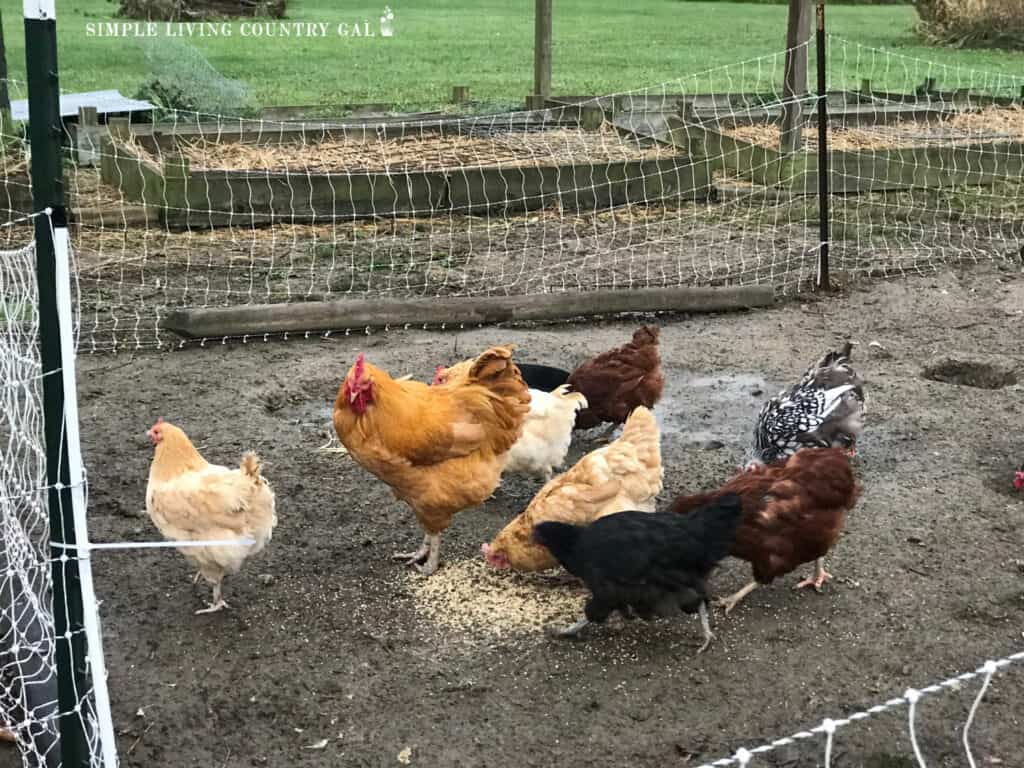
Since it takes quite a bit of energy to regrow feathers, chickens will take a break from laying eggs during that time.
When does molt start?
Molting starts when a hen is about 18 months old, and after that time, it happens every year. You should expect the feather loss and regrowth process to last about 8 to 10 weeks, but it can take up to 16 weeks for some birds.
The start and end times will vary for each bird and where you live.
How molt progresses in chickens
There are several factors that can determine the molting process. These include the age of the chicken, nutrition, and environment. You’ll notice the process starting when their feathers start to lose their sheen. After that, feather loss can vary by bird.
Hens that are younger and more productive egg layers will recover more quickly than older, less productive hens. Some will gradually lose feathers, while others may lose a large amount of feathers overnight. You may find piles of feathers in the coop, and for first-time chicken owners that can be incredibly alarming.
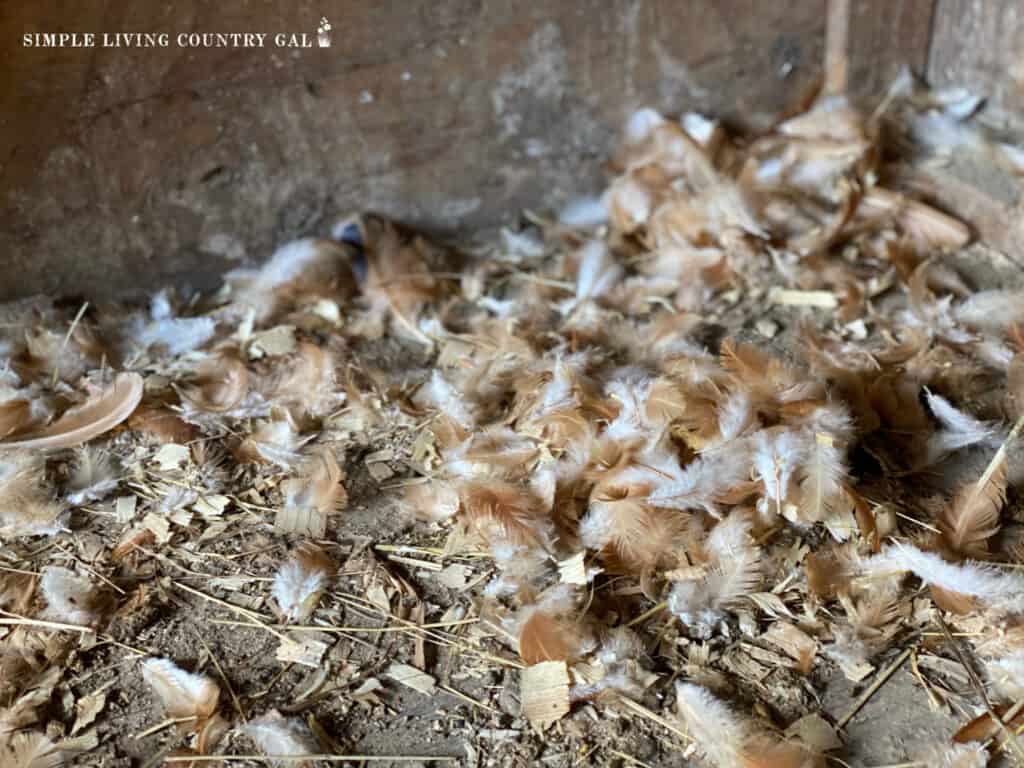
Regardless of age, the best thing you can do to help your chickens through the process is to provide a nutritional diet and keep their stress levels low.
How to Help Your Chickens During Molt
Over the years, I have found that the more I can support a healthy and clean environment in my flock, the fewer issues I have to deal with later on. This list is all about that support.
1. Provide Plenty of Protein
Chickens require a different diet depending on their age and activity level. Protein is a key factor in keeping them healthy during molt as feathers are made of about 80% protein.
When you see the molting process start, switch their feed to a complete feed with at least 20% protein, probiotics, prebiotics, vitamins, and minerals. It will help them put more energy into feather regrowth so they can get back to laying eggs sooner.
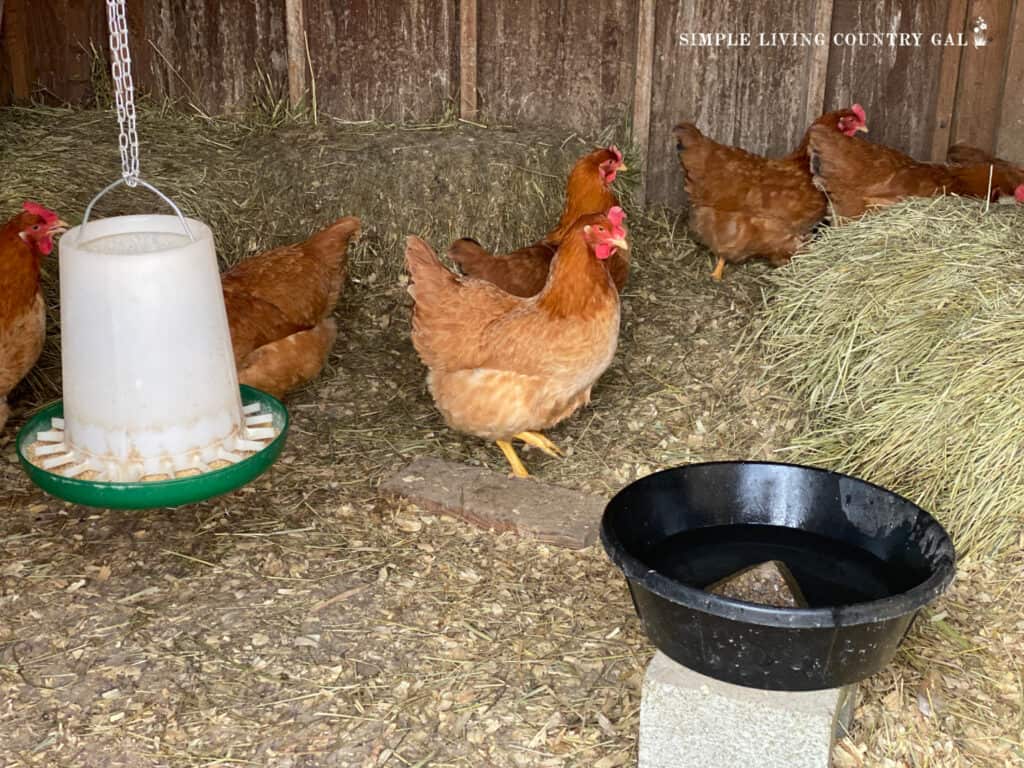
2. Keep Them Comfortable
Chickens can become very sensitive to touch during the molting season due to the loss of feathers so try not to handle them too much and provide plenty of clean bedding. Give them plenty of space for privacy so they can remove themselves from the flock to rest if they want. Four square feet of space inside the coop and 10 square feet of space outside the coop for each chicken should allow them to move about freely and keep them comfortable.
3. Hydrate and Ventilate
Make sure to provide plenty of clean, fresh water and proper air ventilation. This will help them relax and feel comfortable through the process.
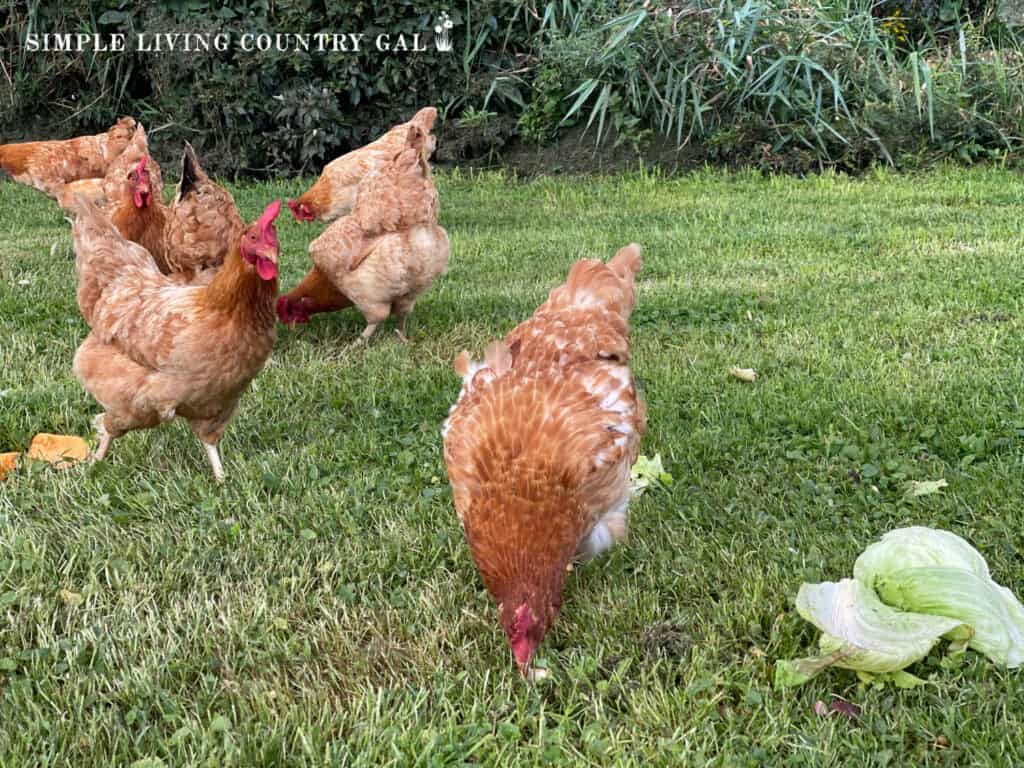
4. Avoid Introducing New Chickens
Introducing new chickens during a molt can shake up the pecking order and cause stress. Molting season is not the right time to increase your flock.
5. Transition with Ease
Once they’ve stopped molting and start producing eggs again, you can transition them back to a feed that better serves their energy needs. A complete layer feed is a good option that provides them with the nutrition they need for egg production.
Gradually mix the complete layer feed in with the high-protein feed during a 7-10 day period to help them adjust back to it and avoid digestive upsets.
Watching for Stress Factors during chicken molting
Molting can be a very stressful time for chickens, but you can help them through it by watching for stress factors.
During the molting season, you may see more bullying, which can be targeted to just one or two hens. If this happens, remove the bullied hens from the flock, treat their wounds if necessary, and create a safe space for them away from the rest of the flock.
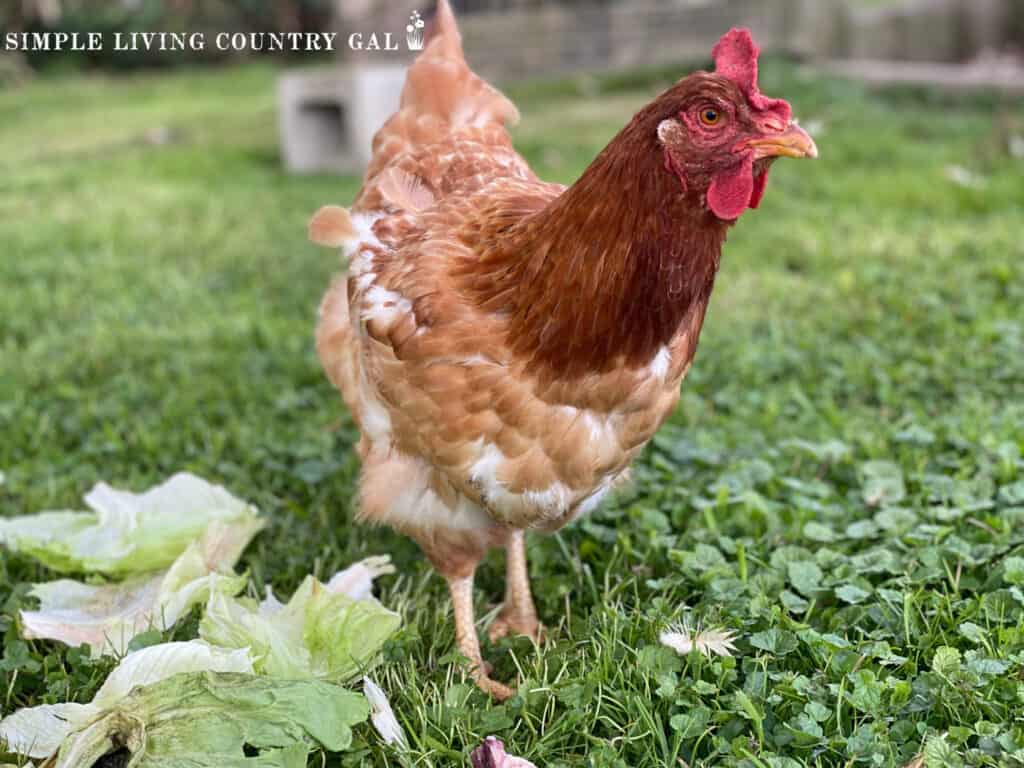
You may also notice that they’re not eating or drinking water. If this happens, try removing them from the flock and feeding them on their own. Provide plenty of fresh food and water to entice them. Adding a few drops of Apple Cider Vinegar to their water can aid in digestion and may help them start eating again. If they’re still not eating, try mixing a small amount of their layered food into their high-protein food for some variety.
The molting process is completely normal and happens for all chickens, so it’s nothing to worry about. You can expect it to take anywhere from 2 to 3 months, and they won’t be producing eggs during this time; that is also completely normal. Keep them comfortable, well-nourished, and stress-free to encourage the process along.
Remember that your chickens may be very sensitive to touch during this time, and they may also be more likely to be bullied by others in the flock, so keep a close eye on them and remove them if necessary. Once they have their new feathers, you should start to see plenty of egg production very quickly and can quickly relax knowing chicken molting is done.
More Chicken Care Resources:
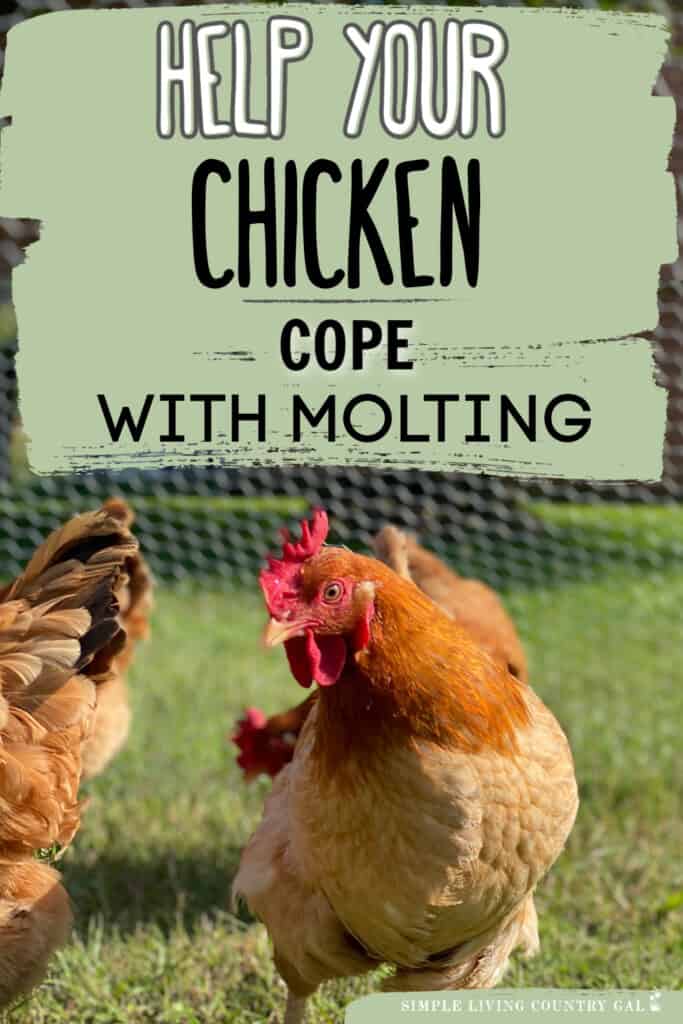

Great Articles. Thanks for sharing !!!